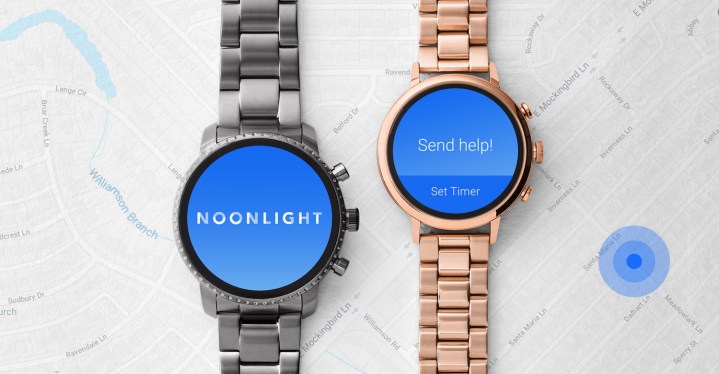
There are plenty of wearables out there meant specifically to help those in an emergency, whether it’s a phone case or a piece of jewelry that have built-in panic buttons. But rather than having to carry around an extra accessory, safety platform Noonlight is making it even easier — by building the feature into your smartwatch.
In partnership with Fossil, those wearing a smartwatch from the company’s new fourth-generation collection will have access to the feature via Wear OS. Whenever there is an emergency, you can activate it by tapping on the watch face which will then send help to your current location.
Powering Fossil’s panic mode is Noonlight’s already existent technology. Formerly known as SafeTrek, Noonlight originally started out as a mobile app that alerts its own certified dispatchers whenever you’re in danger. The technology has since then been integrated into Amazon Alexa, Google Home, Canary, and more.
When setting up the feature on your smartwatch, you have to provide your name, a four-digit PIN, and any information you want responders to know in an emergency. This can be anything from medications you take to allergies you have, and other personal information that is important to know.
You can alert emergency services by manually going into the app on your smartwatch and tapping on “Send help!” But, in those types of situations, you have to act quickly. That’s why you’re also able to create a complication (similar to a shortcut) to signal for help right from the watch face — without having to launch the app.
Users will also have the option to set a timer. If you’re going on a run or on a date, the smartwatch will prompt you to enter your PIN when time is up. If it’s not entered within that time span, Noonlight’s dispatchers are alerted and help will be on the way. Your smartwatch will also vibrate to let you know.
But of course, there’s always a chance that it’s a false alarm. If you accidentally press the alert button, the “Help on the way!” notification will appear and at the bottom, you can tap on “Enter PIN to cancel.” Noonlight’s patented technology scrambles your PIN on the watch face and you will have 10 seconds to enter it in the right order to cancel the alert. If you don’t enter it in time, you can also call or text Noonlight’s dispatchers to let them know.
“Fossil smartwatches with Noonlight is a chance to live beyond the limitations of day-to-day anxieties like home deliveries, evening runs, or meeting strangers,” Brittany LeComte, co-founder of Noonlight, said in a statement. “Working with Fossil means our connected safety platform can comfort and protect even more independent, adventurous men and women at home and on the go.”
For those who have Fossil’s fourth-generation smartwatches still on the way, Noonlight’s alert feature is available out of the box. But if you already own a smartwatch from that particular collection, an update will be rolling out soon.
Editors' Recommendations
- iOS 18 could add a customization feature I’ve waited years for
- One of our favorite Android phones just got its own iMessage app
- The 6 biggest iOS 17 features that Apple stole from Android
- Apple’s latest store opening is one of its most significant in years
- iOS 17 might add a huge Android feature to your iPhone

